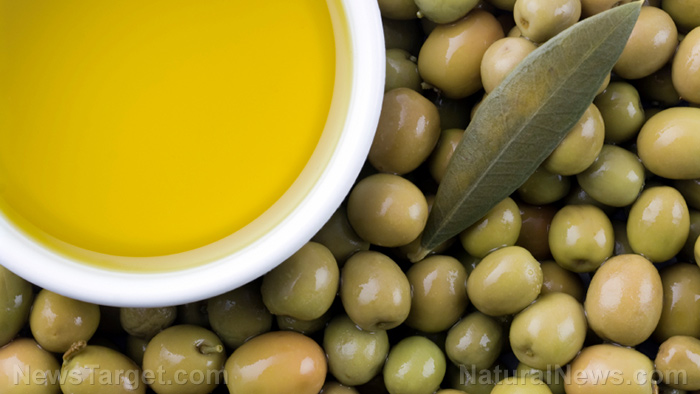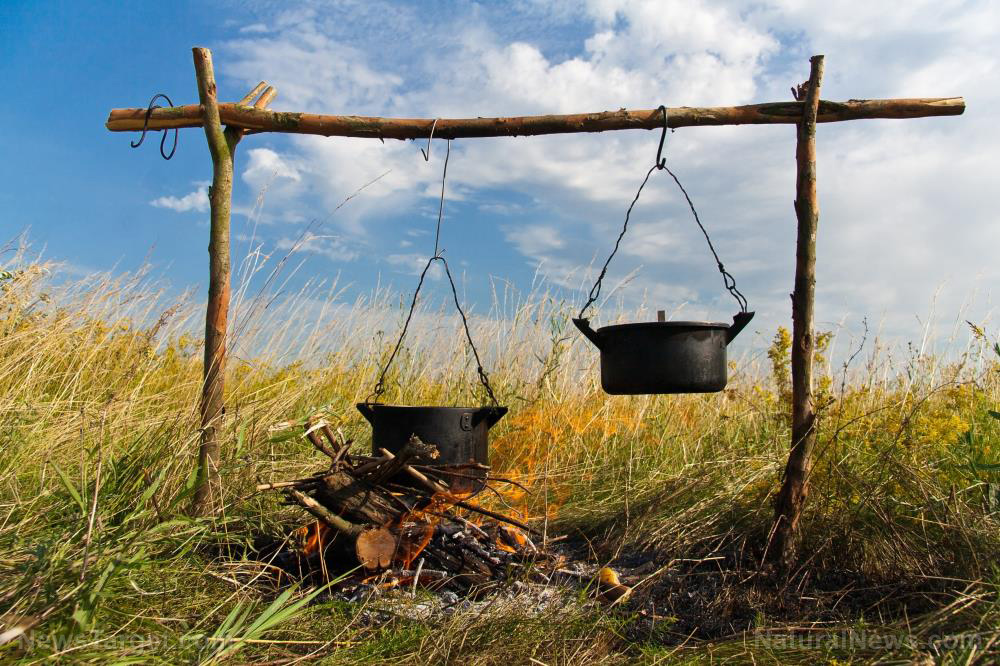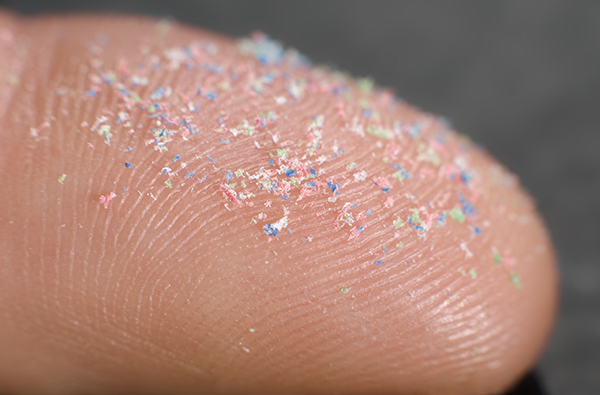
- Deadly plants blend into everyday landscapes, growing along trails, in backyards, and even in ornamental gardens, making accidental poisoning a real risk for preppers and foragers.
- Symptoms range from immediate seizures to delayed organ failure, and without medical care, misidentification can be fatal—especially in survival scenarios where help is unavailable.
- Five of the most lethal plants—water hemlock, deadly nightshade, poison hemlock, white snakeroot, and Jimsonweed—are responsible for some of the most gruesome deaths in history, yet they’re often mistaken for edible species.
- Prevention is the only cure: Field guides, gloves, and strict foraging rules (like the "never taste without 100% certainty" mantra) are non-negotiable for anyone relying on wild food sources.
- Children, pets, and livestock are at highest risk, as their curiosity and smaller body weights make them more vulnerable to accidental ingestion.
The invisible war: How deadly plants exploit human psychology
Like in the movie Into the Wild, hunger is a liar. It whispers that those berries must be safe because they look like the ones you ate last summer. It insists that the carrot-like roots by the creek are a gift from the earth, not a death sentence. Fatigue and stress—two constants in survival situations—erode caution even further. Your brain, desperate for quick energy, overrides the voice that says, "Wait. Are you sure?" This is how water hemlock (Cicuta spp.) claims its victims. It doesn’t just grow in remote swamps; it thrives along creek banks where thirsty hikers stop to refill canteens. Its roots, mistakable for wild parsnips, contain cicutoxin, a neurotoxin so potent that a single bite can trigger grand mal seizures within 15 minutes. Muscles lock. Breathing stops. By the time you realize your mistake, your body is already betraying you. "People think poisonous plants will look monstrous, like something out of a fairy tale," says Dr. Lewis Nelson, a medical toxicologist at Rutgers University. "But evolution doesn’t work that way. The most dangerous species mimic the edible ones. That’s how they survive—and how we don’t." Consider poison hemlock (Conium maculatum), the plant that killed Socrates. Its fern-like leaves and white umbrella-shaped flowers resemble Queen Anne’s lace, a common wild edible. But where Queen Anne’s lace has a hairy stem and a single dark flower in its center, poison hemlock’s stem is smooth, hollow, and streaked with purple—a detail easily missed when your stomach is growling. The toxin, coniine, starts with numbness in the extremities, then climbs upward, paralyzing the diaphragm. Death comes not from pain, but from the inability to draw another breath. The cruelty of these plants lies in their delayed consequences. White snakeroot (Ageratina altissima) doesn’t kill you directly. Instead, its toxin (tremetol) accumulates in the milk of cows that graze on it, turning a survival staple into a slow-acting poison. Historical records describe victims wasting away over days—weakness, vomiting, then liver failure—without ever knowing the cause. In 1818, Nancy Hanks Lincoln, Abraham’s mother, drank tainted milk and died in agony. Her death was so mysterious that neighbors whispered about curses. The truth was far simpler, and far more preventable.The survivalist’s dilemma: When knowledge is the only antidote
In a collapse scenario, you won’t have the luxury of calling poison control. The antidote to deadly plants isn’t a syringe or a pill—it’s the ability to recognize them before they’re in your mouth. Start with the "touch test": Before handling any wild plant, put on gloves. Run your fingers along the stem. Is it hairy or smooth? Hollow or solid? Purple-blotched or uniform? Water hemlock’s stem, for example, is smooth with purple streaks and emits a rank, parsnip-like odor when crushed. Poison hemlock, by contrast, smells musty and unpleasant, like mouse urine. These aren’t just details—they’re red flags. Next, master the "leaf arrangement" rule:- Opposite leaves (pairs emerging at the same node)?: Could be deadly nightshade or Jimsonweed.
- Alternate leaves (single leaves staggered up the stem)?: Might be white snakeroot or pokeweed.
- Fern-like, finely divided leaves?: Poison hemlock or its edible doppelgänger, wild carrot.
- Laminated field guides (waterproof, tucked into your bug-out bag).
- iNaturalist app (for real-time ID, though never rely on it alone).
- Activated charcoal (to absorb toxins if ingestion occurs).
- Nitrile gloves (prevents skin absorption of toxins like those in Jimsonweed).
The children in the garden: Why deadly plants are a family threat
It’s not just adults at risk. In 2018, a 3-year-old in North Carolina died after eating a single castor bean from his backyard. The seeds, glossy and colorful, looked like something from a candy dish. His parents had no idea the ornamental plant was one of the deadliest in the world, its toxin (ricin) so potent that the CDC lists it as a potential bioweapon. The yew tree (Taxus spp.) is a highly toxic evergreen containing taxine, a deadly poison. Ingesting 50–100g of needles can be fatal, causing nausea, vomiting, dizziness, heart failure, and death. Symptoms include abdominal pain, tachycardia, and respiratory distress. Treatment requires activated charcoal, cardiac monitoring, and supportive care. The yew tree produces bright red, fleshy arils (often mistaken for berries), which are the only non-toxic part of the plant. However, this is a dangerous exception: The fleshy red aril is safe for birds (who eat it and excrete the toxic seed). The hard black seed inside is highly poisonous—if chewed or crushed, it releases taxine. Children and pets may be attracted to the bright berries, risking accidental poisoning if they swallow the seeds. Other "garden killers" include:- Oleander: A single leaf can stop a child’s heart. Burning the branches releases toxic smoke.
- Foxglove: Its bell-shaped flowers contain digitalis, the same compound used in heart medication—but in wild doses, it’s lethal.
- Datura (Jimsonweed): Teenagers have hallucinated for days after brewing its seeds into tea, thinking it was a "natural high." Some never wake up.
- Auditing your property for toxic ornamentals (like oleander or foxglove or yew).
- Creating a "no-touch" plant list with photos, reviewed with kids annually.
- Go slow when trying wild plants.
- When in doubt, discard the plant or mushroom.
- Don't get arrogant or desperate about eating wild edibles.
- Confirm wild edibles using multiple sources of identification.
- Storing activated charcoal in your first-aid kit—and knowing the exact dosage for a child’s weight.
Cancer panic erupts as Manhattan Project’s nuclear legacy resurfaces in U.S. cities
By Belle Carter // Share
By Evangelyn Rodriguez // Share
Tyrosol: The unsung antioxidant powerhouse in olive oil and wine
By Ava Grace // Share
Off-grid cooking: Prepare for the next blackout by practicing how to cook without power
By Evangelyn Rodriguez // Share
Former aide claims Netanyahu's first post-Oct. 7 priority was evading responsibility
By isabelle // Share
Mobility SOS: Decoding joint pain after 50 and the path to preservation
By willowt // Share
Kristi Noem declares endgame for Maduro as military pressure mounts
By jacobthomas // Share
Experts warn: Self-aware AI is a near-future desktop technology
By jacobthomas // Share
Microplastics invade reproductive organs—nature's colorful defense may be our best hope
By patricklewis // Share
The silent stressor: How marital strife is quietly damaging our hearts
By avagrace // Share











